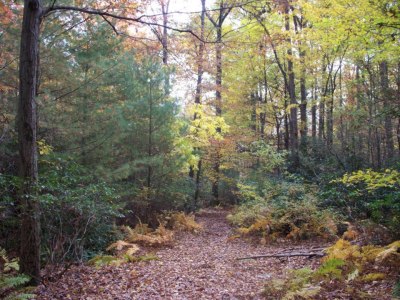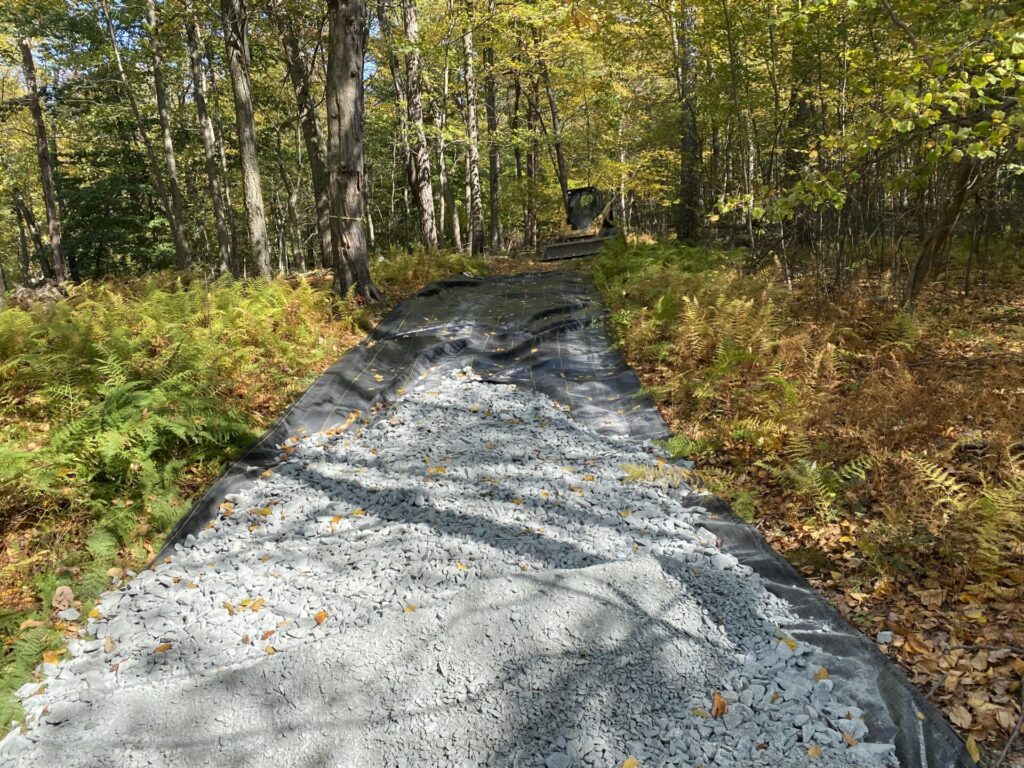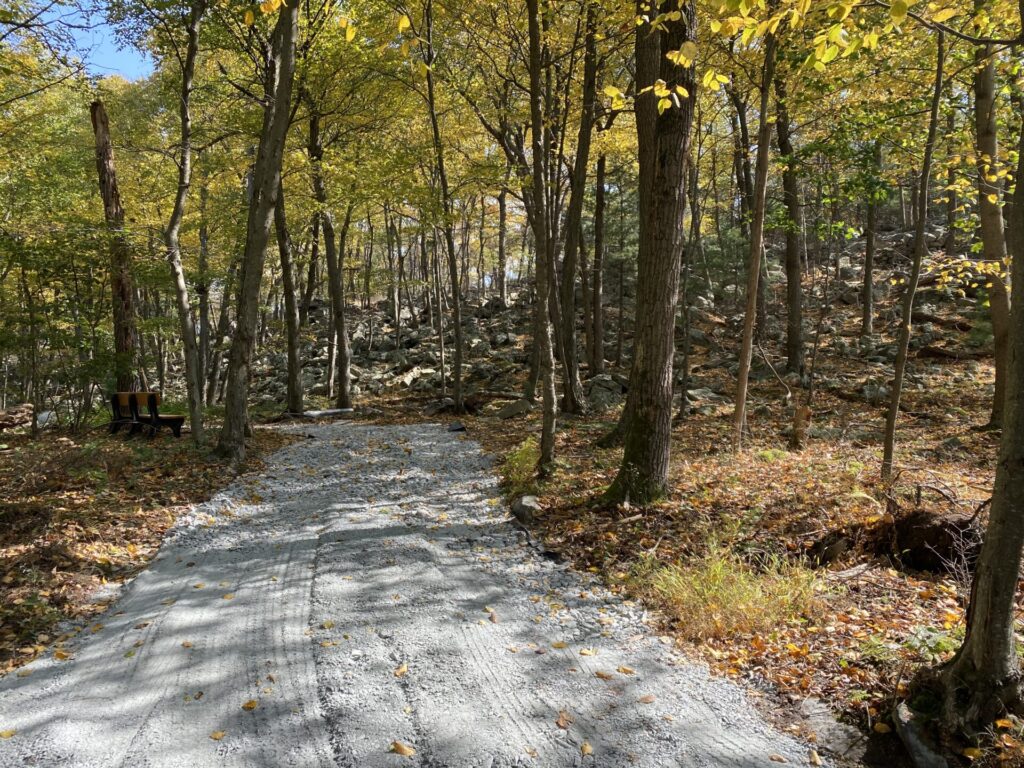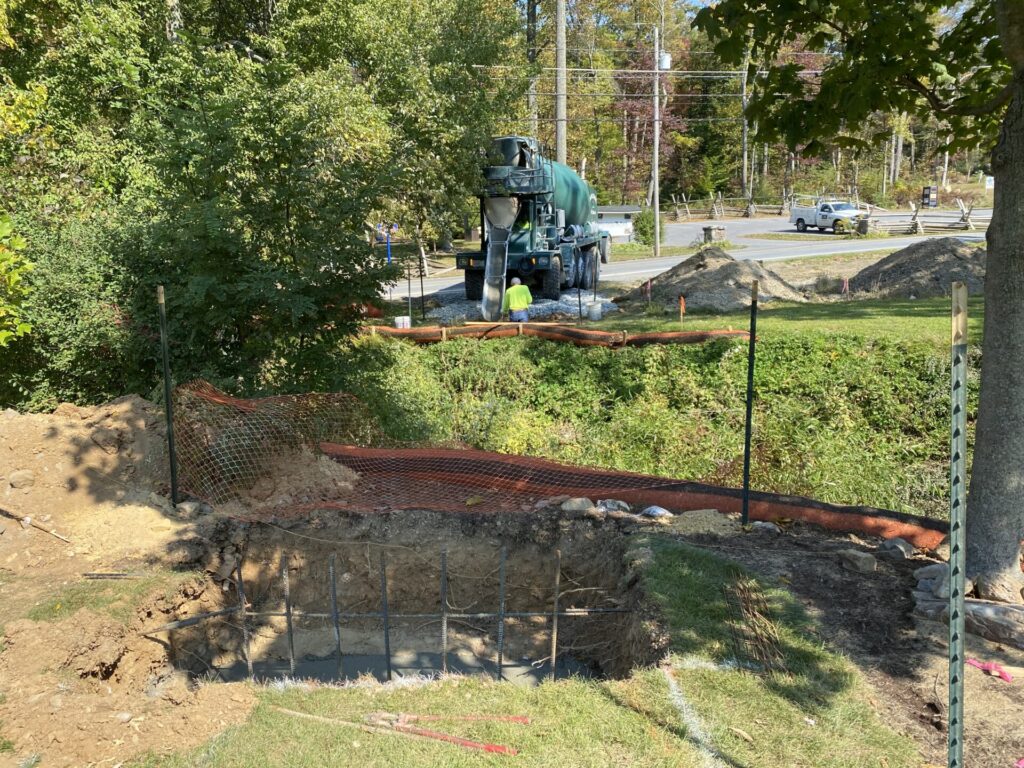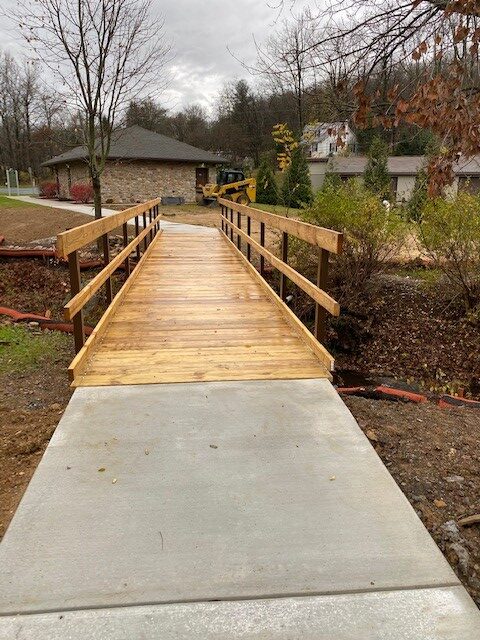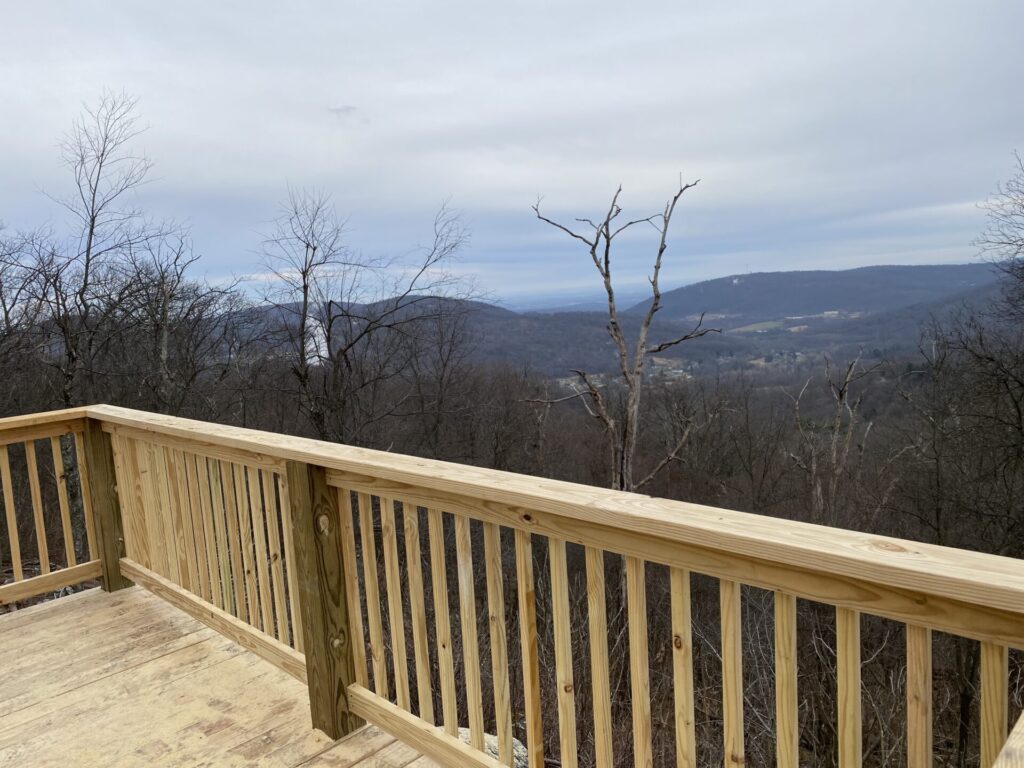Our shrub swamp, grass marsh, and wetland forest ecosystems are home to more than 230 species of plants, 77 bird species, 200 different varieties of invertebrates, including 3 species of turtle, and 120 species of fungi, including some new to the region.
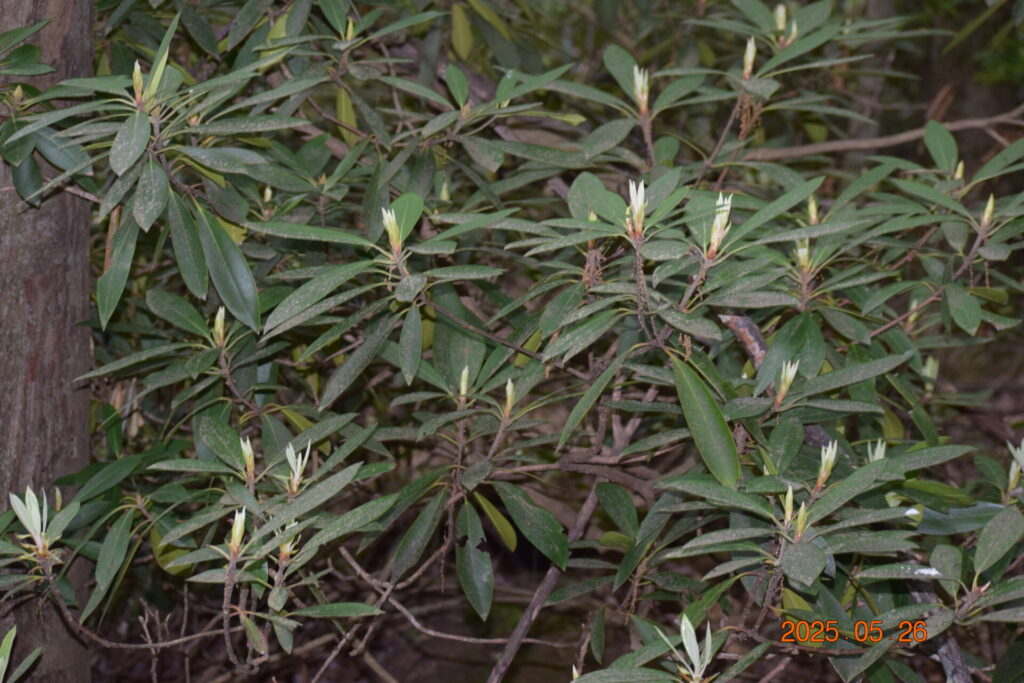
Birds of Happel’s Meadow
Posted 9/2025.
Lists and notes courtesy of Doris Goldman.
77 species by Audubon Society birders (1991-1992) revised 2012, 2021
DUCK-LIKE WATERFOWL
Canada Goose = Branta canadensis
Mallard Duck = Anas platyrhynchos
Wood Duck = Aix sponsa
HERONS & BITTERNS
Great Blue Heron = Ardea herodias
Green Heron = Butorides striatus
SANDPIPERS & PLOVERS
Killdeer = Charadrius vociferous Spotted Sandpiper
Woodcock, American = Scolopax minor
UPLAND GAME BIRDS
Ring-Necked Pheasant = Phasianus colchicus
HAWK-LIKE BIRDS OF PREY
Harrier, Northern (Marsh Hawk) = Circus cyaneus PA threatened?
Merlin = Falco columbarius PA rare?
Red-Tailed Hawk = Buteo jamaiensis
Vulture, Black = Coragyps atratus
Vulture, Turkey = Cathartes aura
OWLS
Barred Owl = Strix varia
Screech Owl, Eastern = Otis asia
DOVES
Mourning Dove = Zenaida macroura
HUMMINGBIRDS & SWIFTS
Chimney Swift = Chaetura pelagica
Ruby-Throated Hummingbird = Archilochus colubris
KINGFISHERS
Belted Kingfisher = Ceryle aicynon
WOODPECKERS
Downy Woodpecker = Picoides pubescens
Flicker, Common = Colaptes auratus
Hairy Woodpecker = Picoides villosus Woodpecker, Red-Bellied = Melanerpes aurofrons
Pileated Woodpecker = Dryocopus pileatus
Yellow-Bellied Sapsucker = Sphyrapicus varius
FLYCATCHERS
Acadian Flycatcher = Empidonax virescens
Great Crested Flycatcher = Myiarchus crinitus
Kingbird, Eastern = Tyrannus tyrannus
Pewee, Eastern Wood = Contopus virens
Phoebe, Eastern = Sayornis phoebe
Willow Flycatcher = Empidonax traillii
SWALLOWS
Purple Martin = Progne subis PA rare; still around?
Barn Swallow = Hirundo rustica
Tree Swallow = Iridoprocne bicolor
JAYS AND CROWS
Blue Jay = Cyanocitta cristata
Crow, American = Corvus brachyrhynchos
Raven, Northern = Corvus corax
TITMICE AND CHICKADEES
Chickadee, Black-Capped = Parus atricapillus
Titmouse, Tufted = Parus bicolor
NUTHATCHES & CREEPERS
Nuthatch, White-Breasted = Sitta carolinensis
WRENS
CarolinaWren = Thryothorus ludovivianus
House Wren = Troglodytes aedon
Winter Wren = Troglodytes troglodytes
GNATCATCHERS & KINGLETS
Blue-Gray Gnatcatcher = Polioptila caerulea
MIMICS
Brown Thrasher = Toxostoma rufum
Gray Catbird = Dumetella carolineneis
Mockingbird, Northern = Mimus polyglottos
THRUSHES
Robin, American = Turdus migratorius
Veery = Catharus fuscescens
Thrush, Wood = Hylocichla mustelina
WAXWINGS & SHRIKES
Cedar Waxwing = Bombycilia cedrorum
STARLINGS
Starling, European = Sturna vulgaris
VIREOS
Vireo, Philadelphia = Vireo philadelphicus
Vireo, Red-Eyed = Vireo olivaceus
WARBLERS
Blue-WingedWarbler = Vermivora pinus
Canada Warbler = Wilsonia canadensis
Redstart, American = Setophaga ruticilla
YellowWarbler = Dendroica petechia
Yellowthroat, Common = Geothlypis trichas
WEAVER FINCHES
Sparrow, House = Passer domesticus
BLACKBIRDS
Blackbird, Red-Winged = Agelaius tricolor
Cowbird, Brown-Headed = Molothrus ater
Grackle, Common = Quiscalus quiscala
OrchardOriole = Icterus spurius
TANAGERS Scarlet Tanager = Piranga olivacea
FINCHES & SPARROWS
Cardinal, Northern = Cardinalis cardinalis
Goldfinch, American = Cardulis tristis
HouseFinch = Carpodacus mexicanus
Indigo Bunting = Passerina cyanea
Junco, Dark-Eyed (Northern) = Junco hyemalis
PurpleFinch = Carpodacus purpureus
Rose-BreastedGrosbeak = Pheucticus ludovicianus
Towhee, Rufous-Sided = Pipilo erthrophthalmus
American Tree Sparrow = Spizella arborea
ChippingSparrow = Spizella passerine
Field Sparrow = Spizella pusilla
FoxSparrow = Passerella iliaca
SongSparrow = Melospiza melodia
White-ThroatedSparrow= Zonotrichia albicollis now PA rare; is it still around Happel?
What about bald eagle, turkey, Carolina chickadee, blueheaded/solitary vireo, kinglets, brown creeper, red b. nuthatch, cuckoos, Baltimore oriole, hermit thrush, fish crow?
Alphabetical by scientific name:
Agelaius tricolor = Red-Winged Blackbird
Aix sponsa = Wood Duck
Archilochus colubris = Ruby-Throated Hummingbird
Anas platyrhynchos = Mallard
Ardea herodias = Great Blue Heron [not endangered but nesting colonies are]
Bombycilia cedrorum = Cedar Waxwing
Branta canadensis = Canada Goose
Buteo jamaiensis = Red-Tailed Hawk
Butorides striatus = Green Heron
Cardinalis cardinalis = Northern Cardinal
Carpodacus mexicanus = House Finch
Carpodacus purpureus = Purple Finch
Cardulis tristis = American Goldfinch
Cathartes aura = Turkey Vulture
Catharus fuscescens = Veery
Ceryle aicynon = Belted Kingfisher
Chaetura pelagica = Chimney Swift
Charadrius vociferous = Killdeer
Circus cyaneus = Northern Harrier (Marsh Hawk) threatened
Contopus virens = Eastern Wood Pewee
Coragyps atratus = Black Vulture
Corvus brachyrhynchos = American Crow
Corvus corax = Northern Raven
Cyanocitta cristata = Blue Jay
Dendroica petechia = Yellow Warbler
Dryocopus pileatus = Pileated Woodpecker
Dumetella carolineneis = Grey Catbird
Empidonax traillii = Willow Flycatcher
Empidonax virescens = Acadian Flycatcher
Geothlypis trichas = Common Yellowthroat
Hirundo rustica = Barn Swallow
Hylocichla mustelina = Wood Thrush
Icterus spurius = Orchard Oriole
Iridoprocne bicolor = Tree Swallow
Junco hyemalis = Dark-Eyed (Northern) Junco
Melanerpes aurofrons = Red-Bellied Woodpecker
Melospiza melodia = Song Sparrow
Mimus polyglottos = Northern Mockingbird
Molothrus ater = Brown-Headed Cowbird
Myiarchus crinitus = Great Crested Flycatcher
Otis asia = Eastern Screech Owl
Parus atricapillus = Black-Capped Chickadee
Parus bicolor = Tufted Titmouse
Passer domesticus = House Sparrow
Passerella iliaca = Fox Sparrow
Passerina cyanea = Indigo Bunting
Phasianus colchicus = Ring-Necked Pheasant
Pheucticus ludovicianus = Rose-Breasted Grosbeak
Picoides pubescens = Downy Woodpecker
Picoides villosus = Hairy Woodpecker
Pipilo erthrophthalmus = Rufous-Sided Towhee
Piranga olivacea = Scarlet Tanager
Polioptila caerulea = Blue-Gray Gnatcatcher
Progne subis = Purple Martin species of concern (vulnerable)
Quiscalus quiscala = Common Grackle
Sayornis phoebe = Eastern Phoebe
Scolopax minor =American Woodcock
Setophaga ruticilla = American Redstart
Sitta carolinensis = White-Breasted Nuthatch
Sphyrapicus varius = Yellow-Bellied Sapsucker
Spizella passerina = Chipping Sparrow
Spizella pusilla = Field Sparrow
Spizella arborea = American Tree Sparrow
Strix varia = Barred Owl
Sturna vulgaris = European Starling
Thryothorus ludovivianus = Carolina Wren
Toxostoma rufum =Brown Thrasher
Troglodytes aedon = House Wren
Troglodytes troglodytes = Winter Wren
Tyrannus tyrannus = Eastern Kingbird
Turdus migratorius = American Robin
Vermivora pinus = Blue-Winged Warbler
Vireo olivaceus = Red-Eyed Vireo
Wilsonia canadensis = Canada Warbler
Zenaida macroura = Mourning Dove
Zonotrichia albicollis = White-Throated Sparrow species of concern (vulnerable)
What about bald eagles, Carolina chickadees, red-b. nuthatch, brown creeper, blueheaded/solitary vireo, kinglets?
BIRDS OF HAPPEL’S MEADOW WETLAND PRESERVE
Blue Ridge Summit, PA
FIX THIS UP
HERONS & BITTERNS SWALLOWS □ Northern Cardinal
□ Great Blue Heron □ Purple Martin □ Rose-Breasted Grosbeak
□ Green-Backed Heron □ Barn Swallow □ American Tree Sparrow
□ Tree Swallow □ Chipping Sparrow
WATERFOWL □ Field Sparrow
□ Canada Goose JAYS AND CROWS □ Fox Sparrow
□ Mallard □ Blue Jay □ Song Sparrow
□ Wood Duck □ American Crow □ White-Throated Sparrow
□ Northern Raven
PLOVERS BLACKBIRDS
□ Killdeer TITMICE □ Brown-Headed Cowbird
□ Black-Capped Chickadee □ Common Grackle
SANDPIPERS □ Carolina Chickadee □ Orchard Oriole
□ Spotted Sandpiper □ Tufted Titmouse □ Red-Winged Blackbird
□ American Woodcock
NUTHATCHES AND CREEPERS WEAVERS
BIRDS OF PREY □ White-Breasted Nuthatch □ House Sparrow
□ Hawk, Red-Tailed
□ Northern Harrier (Marsh Hawk) WRENS FINCHES
□ Vulture, Black □ Carolina Wren □ American Goldfinch
□ Vulture, Turkey □ House Wren □ House Finch
□ Winter Wren □ Purple Finch
OWLS
□ Barred Owl □ Blue-Gray Gnatcatcher
□ Eastern Screech Owl
THRUSHES
FOWL-LIKE BIRDS □ American Robin
□ Ring-Necked Pheasant □ Veery
□ Wood Thrush
DOVES
□ Mourning Dove MIMICS
□ Gray Catbird
SWIFTS □ Northern Mockingbird
□ Chimney Swift □ Brown Thrasher
HUMMINGBIRDS WAXWINGS & SHRIKES
□ Ruby-Throated Hummingbird □ Cedar Waxwing
KINGFISHERS STARLINGS
□ Belted Kingfisher □ European Starling
WOODPECKERS VIREOS
□ Downy Woodpecker □ Red-Eyed Vireo
□ Hairy Woodpecker □ Philadelphia Vireo
□ Northern Flicker WARBLERS
□ Pileated Woodpecker □ Canada Warbler
□ Red-Bellied Woodpecker □ American Redstart
□ Yellow-Bellied Sapsucker □ Yellow Warbler
□ Common Yellowthroat
FLYCATCHERS □ Blue-Winged Warbler
□ Eastern Kingbird
□ Eastern Phoebe TANAGERS
□ Eastern Wood Pewee □ Scarlet Tanager
□ Acadian Flycatcher
□ Great Crested Flycatcher FINCHES & SPARROWS
□ Willow Flycatcher □ Dark-Eyed Junco
□ Eastern (Rufous-Sided) Towhee
□ Indigo Bunting
Revised June, 2012
BY FAMILIES, FOR BIRDERS
HERONS & BITTERNS
Ardea herodias = Great Blue Heron nesting are endangered
Butorides striatus = Green Heron
WATERFOWL
Branta canadensis = Canada Goose
Anas platyrhynchos = Mallard
Aix sponsa = Wood Duck
SANDPIPERS & PLOVERS
Charadrius vociferous = Killdeer
Actitis macularius = Spotted Sandpiper
Scolopax minor =American Woodcock
FOWL-LIKE BIRDS
Phasianus colchicus = Ring-Necked Pheasant
BIRDS OF PREY
Circus cyaneus = Northern Harrier (Marsh Hawk)
Buteo jamaiensis = Red-Tailed Hawk
Cathartes aura = Turkey Vulture
Coragyps atratus = Black Vulture
OWLS
Strix varia = Barred Owl
Otis asia = Eastern Screech Owl
DOVES
Zenaida macroura = Mourning Dove
SWIFTS
Chaetura pelagica = Chimney Swift
HUMMINGBIRDS
Archilochus colubris = Ruby-Throated Hummingbird
KINGFISHERS
Ceryle aicynon = Belted Kingfisher
WOODPECKERS
Dryocopus pileatus = Pileated Woodpecker
Colaptes auratus = Common Flicker
Melanerpes aurofrons = Red-Bellied Woodpecker
Sphyrapicus varius = Yellow-Bellied Sapsucker
Picoides pubescens = Downy Woodpecker
Picoides villosus = Hairy Woodpecker
FLYCATCHERS
Tyrannus tyrannus = Eastern Kingbird
Myiarchus crinitus = Great Crested Flycatcher
Sayornis phoebe = Eastern Phoebe
Contopus virens = Eastern Wood Pewee
Empidonax traillii = Willow Flycatcher
Empidonax virescens = Acadian Flycatcher
SWALLOWS
Progne subis = Purple Martin
Hirundo rustica = Barn Swallow
Iridoprocne bicolor = Tree Swallow
JAYS & CROWS
Corvus brachyrhynchos = American Crow
Corvus corax = Northern Raven
Cyanocitta cristata = Blue Jay
TITMICE
Parus atricapillus = Black-Capped Chickadee
Parus bicolor = Tufted Titmouse
Poecile carolinensis = Carolina Chickadee
NUTHATCHES & CREEPERS
Sitta carolinensis = White-Breasted Nuthatch
WRENS
Troglodytes aedon = House Wren
Troglodytes troglodytes = Winter Wren
Thryothorus ludovivianus = Carolina Wren
Polioptila caerulea = Blue-Gray Gnatcatcher
THRUSHES
Turdus migratorius = American Robin
Catharus fuscescens = Veery
Hylocichla mustelina = Wood Thrush
MIMICS
Toxostoma rufum =Brown Thrasher
Dumetella carolineneis = Grey Catbird
Mimus polyglottos = Northern Mockingbird
WAXWINGS & SHRIKES
Bombycilia cedrorum = Cedar Waxwing
STARLINGS
Sturna vulgaris = European Starling
VIREOS
Vireo philadelphicus = Philadelphia Vireo
Vireo olivaceus = Red-Eyed Vireo
Wilsonia canadensis = Canada Warbler
Setophaga ruticilla = American Redstart
Dendroica petechia = Yellow Warbler
Geothlypis trichas = Common Yellowthroat
Vermivora pinus = Blue-Winged Warbler
Agelaius tricolor = Red-Winged Blackbird
Molothrus ater = Brown-Headed Cowbird
Quiscalus quiscala = Common Grackle
Icterus spurius = Orchard Oriole
Piranga olivacea = Scarlet Tanager
Passer domesticus = House Sparrow
Junco hyemalis = Dark-Eyed (Northern) Junco
Cardinalis cardinalis = Northern Cardinal
Carpodacus mexicanus = House Finch
Carpodacus purpureus = Purple Finch
Cardulis tristis = American Goldfinch
Passerina cyanea = Indigo Bunting
Pheucticus ludovicianus = Rose-Breasted Grosbeak
Pipilo erthrophthalmus = Rufous-Sided Towhee
Zonotrichia albicollis = White-Throated Sparrow
Spizella passerina = Chipping Sparrow
Spizella pusilla = Field Sparrow
Spizella arborea = American Tree Sparrow
Passerella iliaca = Fox Sparrow
Melospiza melodia = Song Sparrow
Flora of Happel’s Meadow
We have 197 species of plants native to Pennsylvania, including rosebay rhododendron, plus one or more orchid species.
Posted 9/2025.
Lists and notes courtesy of Doris Goldman.
237 PLANT SPECIES identified as of Oct, 2021
2020 note: I should key out the mosses, plus 2+ sphagnum mosses & chara
197 PLANTS NATIVE TO PENNSYLVANIA = 83%
237 species – 40 not native [39 not native to US + 1 not native to PA] = 197 PA native species
3/4 not found at Pine Hill, a nearby natural area
Nov. 29, 1998: in a raccoon scat, found teeth of southern red-backed voles = Clethionomys gadderi, and scales from crayfish. Pileated woodpecker.
By 2021: Cattails (sign of nitrogen pollution) have really spread throughout the marsh.
2 PENNSYLVANIA RARE, THREATENED, or ENDANGERED:
1. Carex bullata = bull sedge—endangered
2. Ilex opaca = American Holly—threatened [but may be moved off list in the 2020s]
formerly listed:
(Alisma subcordatum = southern water-plantain)
Carex shortiana = Short’s sedge—rare [but moved off list in the 2020s]
5 MARYLAND ENDANGERED, THREATENED or EXTIRPATED*:
* “extirpated” means “extinct in that state” but not in entire USA
1. Anemone canadensis = Canada anemone—extirpated, SH
2. Gentiana andrewsii = bottle gentian—threatened, S2
3. Pycnanthemum virginianum = Virginia mountain-mint—threatened, S2
4. Thaspium trifoliatum = woodland meadow parsnip—endangered, S1
5. Salix lucida = Shining Willow extirpated, SH
formerly listed:
(Carex bullata = bull sedge) S3
(Carex shortiana = Short’s sedge—formerly endangered, but by 2024 listed as S3S4)
(Helenium flexuosum = purple sneezeweed)
(Rorippa islandica = yellow watercress)
(Rudbeckia triloba = three-lobed coneflower) but by 2024: S3
(Salix discolor = pussy willow) but by 2024: SH
5 PENNSYLVANIA NATIVES NOT REPORTED BEFORE IN FRANKLIN COUNTY:
1. Thaspium trifoliatum = woodland meadow parsnip
2. Fraxinus americana var. americana = true white ash, vs. Biltmore ash
3. Salix discolor = pussy willow
4. Salix myricoides var. myricoides (S. glaucophylla) = blueleaf or broadleaf willow
5. Salix lucida = shining willow
How many species are classified as “Wetland” plants by the U.S. Army Corps of Engineers? 221 of 237 Happel’s Meadow plants have a wetland code used to determine if an area should be protected. 184 of these 221 are natives. Notice that these native plants are more likely to be wetland species than the non-natives are.
OBL = Obligate Wetland: 99% of the time they live in wetlands: 41 species (40 natives, 1sp. or 2% non-
native) = 19%
FACW = Facultative Wetland: 67-99% in wetlands: 55 species (53 natives, 2 species or 4% non-native) = 25%
FAC = Facultative, 34-66% in wetlands: = 42 species (39 natives, 3 species or 7% non-native) = 20%
Wetland total: 138 species, 132 species (96%) natives, 6 (4%) non-natives
FACU = Facultative Upland,1-33%+ in wetlands: 69 species (49 natives, 20 species or 29% non-native) = 31%
UPL = Upland, 1% in wetlands: 11 species (4 natives, 7 species or 64% non-native) = 5%
Non-Wetland total: 80 species, 53 (66%) natives, 27 (34%) non-natives…Many non-native species
are invasive weeds because they can grow over a very wide range of water/soil/shade conditions.
238 PLANTS AT HAPPEL’S MEADOW
169 NONWOODY PLANTS AT HAPPEL’S MEADOW
7 fern allies + 13 monocot forbs + 114 dicot forbs + 34 grass-like monocots
7 FERN ALLIES
1 Equisetum arvense = common horsetail FAC
2 Cystopteris tenuis = C. fragilis var. mackayi = fragile fern, brittle fern; tiny, on logs in swamp near rosebay
rhododendrons FACU
3 Lycopodium obscurum = princess-pine, tree clubmoss FACU
4 Onoclea sensibilis = sensitive fern FACW
5 Osmunda cinnamomea = cinnamon fern FACW
6 Osmunda regalis = royal fern OBL
7 Thelypteris palustris = marsh fern FACW
13 MONOCOT FORBS
1 Allium canadense = Canada wild onion FACU
2 Alisma subcordatum = Alisma plantago-aquatica var. parviflorum = southern water plantain; OBL
3 Arisaema triphyllum var. triphyllum = jack-in-the-pulpit, Indian-turnip FACW-
4 Lemna minor = duckweed, water-lentil OBL
5 Maianthemum canadense = Canada mayflower FAC-
6 Platanthera (Habernaria) lacera = green-fringed orchid or ragged fringed-orchid FACW
7 Potomogeton sp. = a pondweed OBL
8 Sagittaria latifolia = wapato, duck potato OBL
9 Sparganium americanum = American bur-reed, lesser bur-reed OBL
10 Spiranthes cernua = nodding lady’s tresses orchid blooms mid-Oct, found Oct 2021 FACW
11 Symplocarpus foetidus = skunk cabbage blooms Feb-March OBL
12 Typha latifolia = cattail OBL
13 Veratrum viride = green hellebore FACW+
114 DICOT FORBS
1 Acalypha rhomboidea = common three-seeded mercury FACU
2 Achillea millifolium = yarrow, partly native FACU
3 Agrimonia parviflora = many-flowered agrimony, southern agrimony FAC
4 Alliaria petiolata = garlic mustard FACU first found 2022; PA Noxious Weed, not native # 1
5 Ambrosia artemisiifolia = common or annual ragweed FACU
6 Amphicarpaea bracteata = hog-peanut FAC
7 Anemone canadensis = Canada anemone (MD EXTIRPATED) FACW
8 Anthemis arvensis = wild chamomile, corn chamomile, mayweed; not native #2
9 Apocynum cannabinum = dogbane FACU
10 Asclepias syriaca = common milkweed FACU
11 Asclepias incarnata = swamp milkweed OBL
12 Bidens cernua = nodding beggar’s ticks, bur-marigold, OBL
13 Boehmeria cylindrica = false nettle FACW
14 Caltha palustris = marsh marigold OBL
15 Cardamine pensylvanica = Pennsylvania bitter-cress OBL
16 Centaurea jacea = brown or brownray knapweed; FACU not native #3
17 Chelone glabra = turtlehead OBL
18 Chrysoplenium americanum = watermat, golden saxifrage OBL
19 Cichorium intybus = blue sailors, blue chicory; FACU not native #4
20 Cirsium discolor = field thistle UPL…make sure it’s not bull thistle
21 Circaea lutetiana = enchanter’s nightshade FACU
22 Claytonia virginica = spring beauty, Virginia spring beauty FAC
23 Collinsonia canadensis = horsebalm, stoneroot, wild citronella FAC+
24 Conium maculatum = poison hemlock; FACW PA Noxious, not native #5
25 Cryptotaenia canadensis = honewort, wild chervil FAC
26 Cuphea viscosissima = blue waxweed, clammy cuphea FAC-
27 Cuscuta gronovii = a dodder, scaldweed
28 Daucus carota = Queen Anne’s lace; UPL not native #6
29 Dipsacus sylvestris/fullonum = teasel, fuller’s teasel; FACU not native #7
30 Epilobium coloratum = purple-leaved willow-herb OBL
31 Erechtites hieraciifolia = pilewort, fireweed FACU
32 Erigeron annuus = daisy fleabane FACU
33 Eutrochium (Eupatorium or Eupatoriadelphus) fistulosum = joe-pye weed, trumpetweed FACW
34 Eupatorium perfoliatum = boneset FACW+
35 Eurybia (Aster) divaricata = white wood aster
36 Euthamia (Solidago) graminifolia = lanceleaf goldenrod FAC
37 Fragaria virginiana = wild strawberry FACU
38 Galinsoga quadriradiata = quickweed, shaggy soldiers, FACU not native #8
39 Galium aparine = annual cleavers, bedstraw, goosegrass FACU
40 Galium tinctorium = Clayton’s bedstraw, cleavers OBL
41 Gaura biennis = Oenothera gaura = gaura, biennial bee-blossom, butterflies FACU
42 Gentiana andrewsii = bottle gentian (MD THREATENED) FACW behind the small shopping center
43 Geranium maculatum = wild geranium FACU
44 Geum virginianum = rough avens FAC-
45 Helenium flexuosum = H. nudiflorum = southern or purple-headed sneezeweed, near the fire station FAC-
46 Hypericum mutilum = dwarf St. John’s wort FACW
47 Hypericum punctatum = spotted St. John’s wort FAC-
48 Impatiens biflora = I. capensis = orange jewelweed, touch-me-not FACW
49 Impatiens pallida = pale jewelweed, yellow jewelweed FACW
50 Ipomoea pandurata = man-of-the-earth morning glory FACU
51 Leonurus cardiaca = Roman motherwort; not native #9
52 Lobelia cardinalis = cardinal flower FACW+
53 Ludwigia alternifolia = seedbox FACW+
54 Lycopus uniflorus = bugleweed, water-horehound OBL
55 Melilotus alba = white sweet-clover, FACU not native #10
56 Melilotus officinalis = yellow sweet-clover, FACU not native #11
57 Mentha arvensis = wild mint, field mint FACW
58 Mimulus ringens = Alleghany monkeyflower OBL
59 Mitchella repens = partridge berry FACU
60 Myosotis laxa = wild forget-me-not OBL
61 Nasturtium officinale = watercress; OBL not native #12
62 Oenothera biennis = evening primrose FACU-
63 Oenothera fruticosa ssp. fruticosa = southern or narrowleaf sundrops FAC
64 Oenothera tetragona = Oe. fruticosa ssp. glauca; northern sundrops, common sundrops FAC
65 Osmorhiza longistylis = sweet cicely bloom 5-1-22 FACU
66 Oxalis stricta = common yellow wood-sorrel UPL
67 Pastinaca sativa = wild parsnip; PA Noxious, not native #13
68 Penstemon digitalis = foxglove beardtongue FAC
69 Penthorum sedoides = ditch stonecrop OBL
70 Physalis subglabrata/longifolia var. subglabrata = long-leaf groundcherry
71 Phytolacca americana = pokeweed, inkberry FACU
72 Pilea pumila = clearweed FACW
73 Plantago lanceolata = buckhorn, English plantain; UPL not native #14
74 Plantago major = broad-leaved plantain, white man’s foot; FACU not native #15
75 Plantago rugelii = broad-leaved plantain; a native one with smooth red stems FACU
76 Polygonum arifolium = halberd-leaved smartweed or tearthumb OBL
77 Polygonum amphibium var. emersum = water smartweed, submerged aquatic OBL
78 Polygonum caespitosum = long-bristled smartweed, FACU- not native #16
79 Polygonum perfoliatum = Mile a minute vine FAC, PA Noxious, not native #17
80 Polygonum punctatum = dotted smartweed, water smartweed OBL
81 Polygonum sagittatum = arrowleaf-smartweed or tearthumb OBL
82 Potamogeton sp. = a pondweed, in channelized waterways
83 Potentilla norvegica = strawberry-weed, three-leaf cinquefoil FACU
84 Prenanthes alba = rattlesnake root, white lettuce FACU
85 Proserpinaca palustris = mermaid-weed OBL
86 Prunella vulgaris ssp. lanceolata = self-heal, heal-all; native subsp. FACU+
87 Pycnanthemum virginianum = Virginia mountain mint (MD THREATENED) FAC
88 Ranunculus abortivus = kidney-leaf buttercup FACW-
89 Ranunculus septentrionalis = R. caricetorum = swamp buttercup OBL
90 Ranunculus repens = creeping buttercup; FAC not native #18
91 Rorippa islandica = yellow watercress OBL
92 Rudbeckia hirta = black-eyed susan FACU-
93 Rudbeckia laciniata = tall or green-headed coneflower FACW
94 Rudbeckia triloba = black-eyed susan, three-lobed coneflower FACU
95 Rumex crispus = yellow dock; FACU not native #19
96 Scutellaria integrifolia = hyssop-skullcap FACW
97 Solanum carolinense = horse nettle UPL
98 Solidago canadensis var. scabra (Solidago altissima) = tall goldenrod, Canada goldenrod FACU
99 Stellaria longifolia = longleaf stitchwort FACW
100 Symphyotrichum (Aster) lanceolatus = Aster simplex, simple aster FACW
101 Symphyotrichum (Aster) lateriflorum = calico aster FACW-
102 Symphyotrichum (Aster) novae-angliae = New England aster FACW-
103 Symphyotrichum (Aster) prenanthoides = zig-zag aster FAC
104 Symphyotrichum (Aster) puniceum = purplestem aster; bristly aster, swamp aster OBL
105 Symphyotrichum (Aster) undulatum = clasping heart-leaved aster or wavy-leaved aster
106 Taraxacum officinale = dandelion, FACU-, not native #20
107 Thalictrum pubescens = tall meadowrue FACW+
108 Thalicrum (Anemonella) thalictroides = rue-anemone FACU
109 Thaspium trifoliatum = woodland or purple meadow-parsnip (MD ENDANGERED); not reported before in Franklin
Co.
110 Tussilago farfara = coltsfoot, FACU, not native #21
111 Verbena hastata = simpler’s joy, blue vervain FACW+
112 Vernonia novaboracensis = ironweed FACW
113 Viola conspersa = American dog violet FACW
114 Viola papilionacea (V sororia) = common blue violet FAC-
34 GRASS-LIKE MONOCOTS
1 Andropogon gerardii = turkeyfoot grass, big bluestem FAC
2 Andropogon virginicus = broom-sedge FACU
3 Carex bullata = bull sedge (PENNSYLVANIA ENDANGERED) OBL
4 Carex folliculata = follicled sedge OBL
5 Carex laxiculmis = spreading sedge; a woodland sedge; “loose-culmed sedge”
6 Carex shortiana =Short’s sedge (PENNSYLVANIA RARE, MD. ENDANGERED) FAC
7 Carex stipata = awl-fruited sedge OBL
8 Carex tribuloides = caltrops sedge FACW+
9 Carex vulpinoidea = foxtail sedge OBL
10 Cinna arundinacea = wood reedgrass FACW+
11 Cyperus esculentus = yellow nut-sedge, FACW not native #22
12 Cyperus strigosus = straw-colored umbrella-sedge FACW
13 Dulichium arundinaceum = three-way sedge OBL
14 Echinochloa pungens = E. muricata; native barnyard grass FACW+
15 Eleocharis sp. = a spike-rush, OBL (probably E. erythropoda = red-footed; only in bud on 9-16-06)
16 Eragrostis sp. = a lovegrass
17 Festuca elatior var. arundinacea = alta fescue, Kentucky 31; FACU-, not native #23
18 Festuca obtusa = nodding fescue FACU
19 Festuca pratensis = meadow fescue, FACU-, not native #24
20 Festuca rubra = red fescue; FACU, not native #25
21 Glyceria striata = fowl mannagrass Oct 2021 OBL
22 Juncus dudleyi = Dudley’s rush FAC-
23 Juncus effusus = common rush, soft rush FACW+
24 Leersia oryzoides = rice cut-grass OBL
25 Microstegium vimineum = Japanese stilt grass FAC, PA Noxious, not native #26
26 Muhlenbergia schreberi = nimbleweed, dropseed FAC
27 Panicum (Dichanthelium) clandestinum = deer-tongue grass FAC+
28 Panicum dichotomiflorum = fall or smooth panic-grass; spreading witch-grass FACW-
29 Phalaris arundinacea = reed canary grass FACW-
30 Scirpus atrovirens = black bulrush; probably var. georgianus OBL
31 Scirpus cyperinus = wool-grass, including some Scirpus rubricosus = red wool-grass FACW
32 Setaria faberi = giant foxtail grass, UPL, not native #27
33 Sorghastrum nutans = Indian grass UPL
34 Tridens flavus = purpletop, greasy grass FACU
67 WOODY PLANTS AT HAPPEL’S MEADOW
(10 vines + 57 trees & shrubs)
10 VINES
1 Celastrus orbiculatus = [Oriental] bittersweet, UPL, PA Noxious, not native #28
2 Clematis virginiana = virgin’s bower clematis, devil’s darning needles FAC
3 Parthenocissus quinquefolia = Virginia creeper FACU
4 Rubus hispidus = swamp dewberry FACW
5 Smilax glauca = sawbriar, wild sarsaparilla FACU
6 Smilax rotundifolia = common greenbriar, roundleaf catbriar FAC
7 Solanum dulcamara = climbing nightshade, bittersweet; FAC-, not native #29
8 Toxicodendron radicans = poison ivy FAC
9 Vitis labrusca = fox grape; in winter, tendrils on 3 nodes in a row, tendrils & stems hairy FACU
10 Vitis vulpina = winter or chicken grape FAC
57 TREES AND SHRUBS
1 Acer rubrum = red maple FAC
2 Acer saccharinum = silver maple FACW
3 Alnus serrulata = smooth alder OBL
4 Amelanchier arborea = common shadbush FAC-
1 Celastrus orbiculatus = [Oriental] bittersweet, UPL, PA Noxious, not native #28
7 Betula lutea (B. alleghaniensis) = yellow birch FAC
8 Carya ovata = shagbark hickory FAC-
9 Catalpa bignonioides = catalpa, Indian bean; UPL not native to this part of U.S.
10 Celtis occidentalis = hackberry, sugarberry FAC
11 Cephalanthus occidentalis = buttonbush OBL
12 Cornus amomum = silky dogwood, silky cornel, kinnikinik dogwood FACW
13 Cornus racemosa = red-panicled dogwood FAC
14 Crataegus crus-galli = cockspur-thorn hawthorn FACU
15 Diospyros virginiana = persimmon FAC-
16 Fraxinus americana var. americana = white ash, the variety without tomentose twigs, not reported before in Franklin
County FACU…by 21st century: MOSTLY DEAD
17 Fraxinus pennsylvanica var. subintegerrima = green ash; the nonhairy var. of red ash FACW…MOSTLY DEAD
18 Ilex opaca = American Holly; PA THREATENED SPECIES; FACU
19 Ilex verticillata = winterberry holly, black alder FACW+
20 Juniperus virginiana = red cedar FACU
21 Kalmia latifolia = mountain laurel FACU
22 Lindera benzoin = spicebush FACW-
23 Liriodendron tulipifera = tulip poplar FACU
24 Lonicera morrowii = Morrow’s bush honeysuckle;FACU, PA Noxious, not native #32
25 Lonicera tatarica = Tartarian bush honeysuckle; FACU, PA Noxious, not native #33
26 Malus floribunda = Japanese flowering crabapple; not native #34
27 Malus pumila = apple, paradise apple; not native #35
28 Morus alba = white mulberry; UPL, not native #36
29 Physocarpus opulifolius = ninebark FACW-
30 Pinus strobus = eastern white pine FACU
31 Platanus occidentalis = sycamore FACW-
32 Populus deltoides = eastern cottonwood FACU-
33 Prunus serotina = black cherry FACU
34 Pyrus sp. = ornamental crabapple, In December, seeds 5 x 2 x 1.5 in 1 cm wide (withered) in red and sweet fruits, no
thorns, simple cymes, leaf buds quite wooly; not native #37
35 Quercus alba = white oak FACU
36 Quercus bicolor = swamp oak FACW+
37 Quercus palustris = pin oak FACW
38 Rhododendron maximum = rosebay rhododendron blooms late June FAC
39 Rhus typhina = staghorn sumac
40 Robinia pseudoacacia = black locust FACU-
41 Rosa palustris = swamp rose OBL
42 Rosa multiflora = multiflora rose; FACU, PA Noxious, not native #38
43 Rubus allegheniensis = highbush or Alleghany blackberry FACU
44 Rubus occidentalis = wild black raspberry, blackcap raspberry
45 Rubus phoenicolasius = wineberry, FACU, not native #39
46 Salix discolor = pussy willow; not reported before in Franklin Co. FACW; in winter stem stout, divergent, greenish,
pubescent near tip, buds 5(-6) mm long, quite broad, alternate, dark chestnut brown, smooth to very short-
pubescent, leaf scars very wide and raised, twig not brittle; in fall 98 from south side of Rt 16 leaf white underneath, undulant edge, 7 x 2 cm but missing tip, blackened when dry, petiole 1.5 cm, leaf base pointed, buds angled, 1-5 mm, fused scales, blackish esp at base, slightly hairy at tip, twig brown and smooth stem
47 Salix myricoides var. myricoides (S. glaucophylla) = blueleaf willow, broadleaf willow; FAC
not reported before in Franklin Co.
48 Salix interior = sandbar willow FACW
49 Salix lucida = shining willow, not reported before in Franklin Co.; though possibly S. interior or S. serissima? Winter
stems look very polished, dull yellow or greenish, thin and ascendent, chestnut brown smooth narrow buds, 4-5
mm long; FACW
50 Sambucus nigra var. canadensis = S. canadensis = elderberry FACW-
51 Sassafras albidum = sassafras FACU
52 Spiraea alba var. latifolia = S. latifolia = white meadowsweet, American meadowsweet, hardhack spirea FACW
53 Tsuga canadensis = eastern hemlock FACU
54 Vaccinium angustifolium = low sweet blueberry, lowbush blueberry FACU
55 Viburnum prunifolium = black haw viburnum FACU
56 Viburnum recognitum = arrowhead viburnum, southern arrow-wood FAC
57 Ulmus rubra = slippery elm, red elm FAC
Fungi
Fungi are everywhere in Happel’s Meadow, with dozens of species appearing throughout the seasons. Moisture-loving mushrooms thrive in the swamp and wet meadows, while woodland species cluster along the forested edges. Others decompose grasses, shrubs, and fallen wood, returning nutrients to the soil. Together, this hidden network sustains biodiversity and makes fungi some of the meadow’s most essential inhabitants.
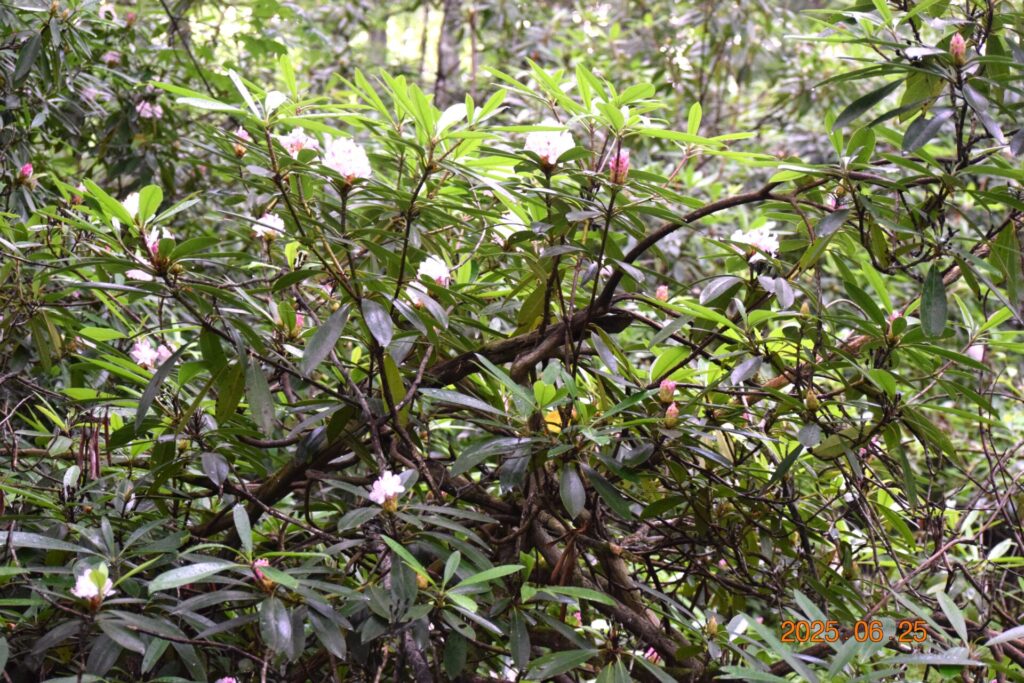
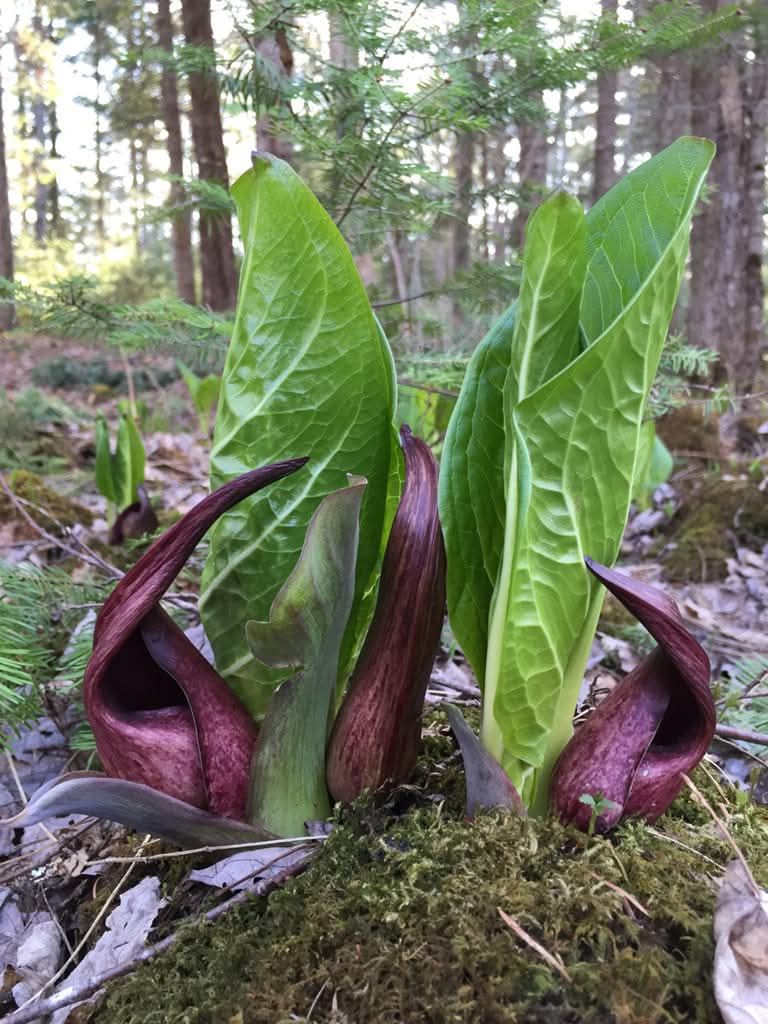
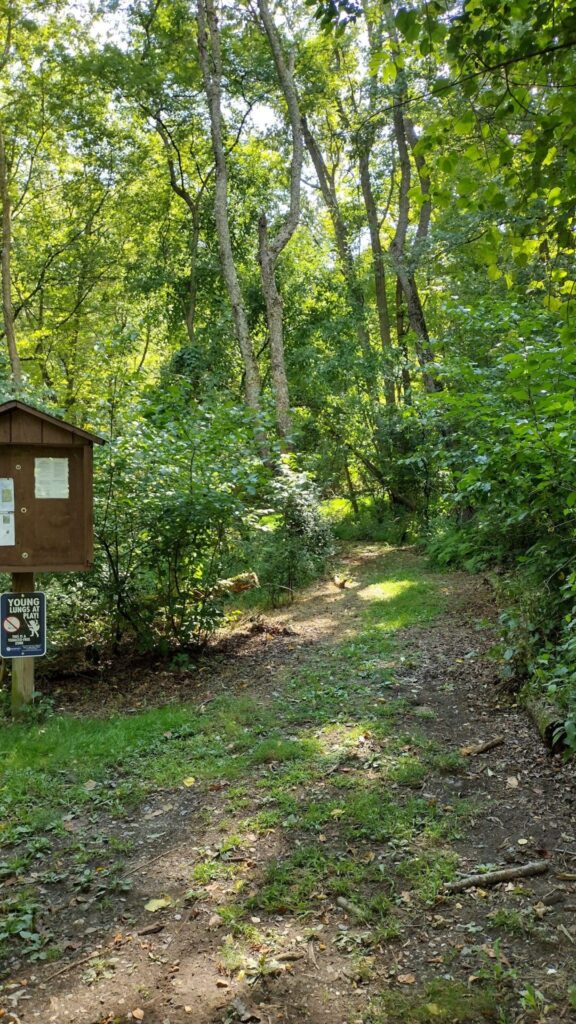
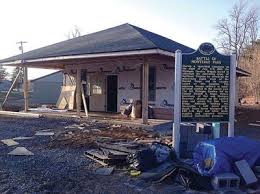
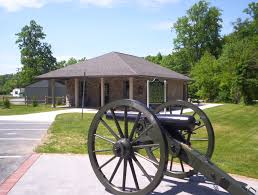
~ ~ ~ ~ ~
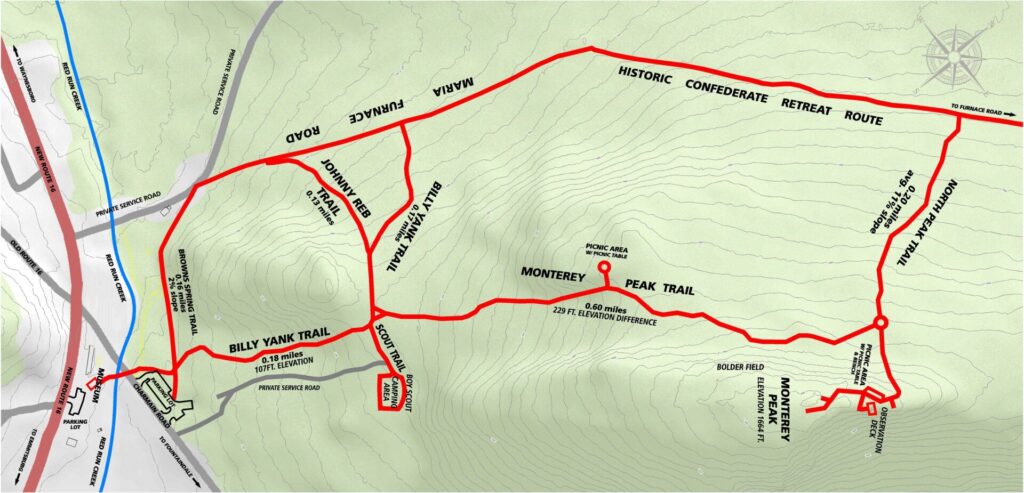
~ ~ ~ ~ ~

